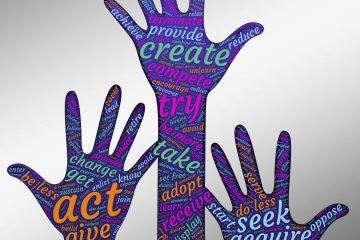
Click below to listen to this article:
Sociocultural theory of trauma
The Sociocultural theory of trauma is a framework that examines how traumatic experiences are shaped by social and cultural factors. Some of the main aspects of this theory are:
- Trauma is not a fixed or objective reality, but a subjective and dynamic construct that depends on the meaning and interpretation of the event for the individual and their community.
- It is influenced by the historical, political, and economic context of the event, as well as the cultural norms and values that shape the responses and coping strategies of the survivors and their society.
- Also, it can have intergenerational effects, as the trauma narratives and memories are transmitted across generations and affect the identity and world-view of the descendants of the survivors.
- Trauma can also have collective and social implications, as it can disrupt the sense of belonging and trust in the community and the institutions, and create social divisions and conflicts.
In this article, we will explore the origins and development of the Sociocultural theory of trauma, its main concepts and applications, and its strengths and limitations.
Main points of the sociocultural theory of trauma
The sociocultural theory of trauma is a framework that examines how traumatic experiences are shaped by social and cultural factors. Some of the main points of this theory are:
Trauma is not a universal or objective phenomenon, but rather a subjective and contextual one. Different groups and individuals may have different definitions and interpretations of what constitutes a traumatic event, depending on their values, beliefs, norms, and expectations.
Trauma is influenced by the power dynamics and inequalities that exist in society, such as racism, sexism, classism, colonialism, and oppression. These factors can create conditions that increase the risk of exposure to trauma, as well as affect the availability and accessibility of resources and support for coping and healing.
Trauma is also affected by the cultural meanings and narratives that are attached to it. How people make sense of their traumatic experiences can have implications for their identity, agency, resilience, and recovery. Culture can provide sources of strength and solidarity, as well as stigma and shame.
Trauma is not only an individual experience, but also a collective one. It can impact not only the person who directly experienced it, but also their family, community, and society. Trauma can also be transmitted across generations through various mechanisms, such as epigenetics, parenting styles, and cultural memory.
Trauma can be a catalyst for social change and transformation. It can motivate people to challenge the status quo, seek justice, and create new possibilities for themselves and others. Trauma can also inspire collective healing and empowerment through solidarity, activism, and advocacy.
Application of the theory
Some of the applications of the sociocultural theory of trauma are:
- To understand how different cultures and communities cope with and recover from trauma, and how they provide support and resources for their members.
- To analyse how trauma affects the formation and transformation of collective identities, narratives, and symbols, and how these in turn influence social movements, conflicts, and reconciliation.
- To explore how trauma is represented and communicated in various forms of media, art, and literature, and how these expressions shape public awareness and discourse on trauma-related issues.
- To evaluate how trauma-informed care can be adapted and implemented in diverse settings and populations, considering the sociocultural factors that influence the perception, expression, and treatment of trauma.
Strengths and weaknesses
One of the strengths of the Sociocultural theory of trauma is that it acknowledges the diversity and complexity of trauma survivors and their contexts. The theory recognizes that trauma can have different meanings and impacts for different groups of people, depending on their identities, histories, and relationships. The theory also highlights the importance of social support and collective action in facilitating healing and recovery from trauma. The theory encourages trauma survivors to reclaim their agency and voice, and to challenge the structures and systems that oppress them.
One of the weaknesses of the Sociocultural theory of trauma is that it may overlook the biological and physiological aspects of trauma. The theory focuses mainly on the social and cultural dimensions of trauma, but it does not address how trauma affects the brain, body, and nervous system. The theory may also neglect the individual differences and preferences of trauma survivors, and assume that they all share the same needs and goals. The theory may also be too idealistic and optimistic about the possibility of social change and justice, and ignore the realities and challenges of living in a traumatized world.
Some of the main developers of this theory
Judith Herman: She proposed the concept of complex PTSD, which describes the long-term effects of chronic interpersonal trauma. She also emphasized the importance of social recognition and validation for trauma survivors.
Mary Harvey: She developed the Social-Cognitive Processing model, which explains how trauma affects the way people think and feel about themselves, others, and the world. She also highlighted the role of social support and disclosure in trauma recovery.
Laura Brown: She introduced the notion of cultural competence in trauma therapy, which means being aware of and respectful to the diverse cultural backgrounds and identities of trauma clients. She also advocated for a feminist perspective on trauma that challenges oppressive social structures and power dynamics.
Bessel van der Kolk: He pioneered the research on the neurobiological and physiological impacts of trauma on the brain and body. He also advocated for integrative and holistic approaches to trauma treatment that address both psychological and somatic aspects.
Further reading
Some weblinks that explore the sociocultural theory of trauma are:
https://www.verywellmind.com/what-is-sociocultural-theory-2795088
https://www.ncbi.nlm.nih.gov/books/NBK207195/
https://sociology.yale.edu/publications/trauma-social-theory



0 Comments